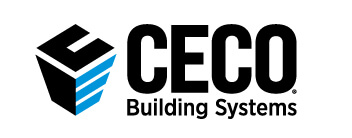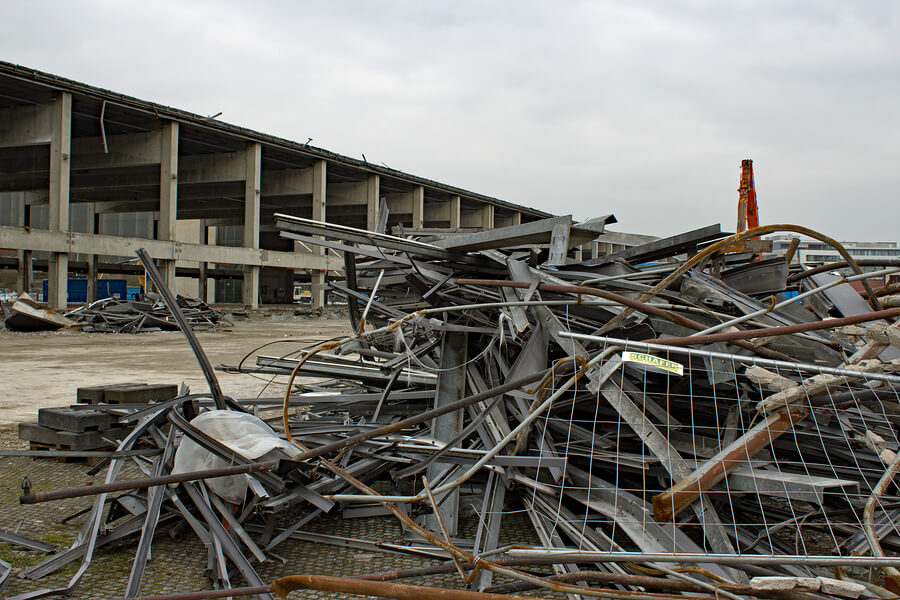Sustainability, Metal Buildings and Waste
Posted on December 7, 2020 by Greg HekmanIn prior blog posts, we discussed the LEED® program and the Declare Program/Red List as they relate to using metal building systems as part of creating green and sustainable buildings. Following up on those discussions, this post focuses in on one aspect of green buildings, namely addressing the control of construction and demolition waste.
It is important to note that LEED® and other similar programs do not certify individual products like the Declare program. Rather, LEED® is a means to certify a complete project. Individual products, in addition to other design, construction, and operations attributes, can all help contribute to creating a building that achieves a LEED® certification based on the total number of points that are earned. Hence, metal building systems and components are not LEED® certified by themselves. Instead, the data on how the materials are created, used, transported, and installed is recorded. This in turn is used by architects, engineers, and contractors to document eligibility contributing to specific points in a total LEED® certified project.
Considering the above, the Materials and Resources category of LEED® contains several sections directly related to Construction and Demolition Waste Management on a project site. Since this is a popular credit to pursue on a LEED® designed project, it is worth understanding some particulars to avoid confusion.
Intent
The intent behind the waste management initiative is to reduce the amount of construction and demolition waste being sent to landfills or incinerators and instead manage it to be recovered, re-used, or recycled.
Pre-Requisite Requirements
For any project to be considered for LEED® certification, there is a pre-requisite requirement that at least five materials are identified (structural or non-structural) and documented as being managed appropriately. Like all pre-requisites, there are no points earned for this minimum effort, just eligibility to continue. Metal building systems and components can be identified as one of these five materials since it is easy and desirable to collect and re-use or re-purpose any extra metal that might otherwise be considered waste.
Waste Management Points
To earn points toward this credit category the majority of all waste and demolition material must be diverted from landfills and incinerators. There are options and levels that achieve different points such as percent of weight diverted, the number of material streams affected, and whether a certified recycling facility is involved. Metal building systems and components are pre-fabricated and shipped to the project site with very little, if any, waste steel. The related packaging and shipping materials are relatively small for metal building systems, in addition factory-welded clips on structural components will further reduce the size or quantity of shipping containers. The small amount of dunnage, cardboard boxes, plastic bags, strippable film and sealant tape/tubes might constitute waste from a metal building project, but this is easily collected and recycled as part of an overall waste management plan at the job site.
Zero Waste
Separate from LEED, there are several other initiatives that are advocating for the elimination of waste in our daily activities, including construction and demolition. One voluntary program has been put forth by the US Environmental Protection Agency (EPA) and is termed “Zero Waste.” It is defined as “The conservation of all resources by means of responsible production, consumption, reuse, and recovery of products, packaging, and materials without burning and with no discharges to land, water, or air that threaten the environment or human health.” Related to construction and demolition, it means that 100% of any packaging and shipping materials is captured and diverted. It also means that all demolition materials (e.g. asphalt, concrete, dimensional lumber, fiberboard, plywood, ferrous metals, non-ferrous metals, asphalt shingles, cardboard, carpet, etc.) are separated and re-used or re-purposed. This goal of zero waste is admirable and well worth pursuing, however, it is a totally voluntary effort. LEED® and other green building programs do not require zero waste, rather, they require documentation to show that the level of management being pursued (i.e. 50%, 75%) has been achieved.
Local Regulations
Some local jurisdictions have made construction waste management a requirement. In California for example, CalGreen currently mandates 65% diversion of waste material from the landfill. Other jurisdictions may have similar requirements, so construction managers need to be aware of these regulations and the means to achieve these goals
Regarding construction waste management overall, metal building manufacturers play a supporting role to the general contractor or construction manager. Manufacturers can provide documentation that the metal buildings are pre-fabricated and minimize the amount of packing and shipping material used, but ultimately it is up to the onsite construction manager to show compliance with goals for the overall building project.
To find out more about the LEED® program, visit the U.S. Green Building Council website. To find out more about how metal buildings can contribute points in a current or upcoming project contact your local Ceco representative.


